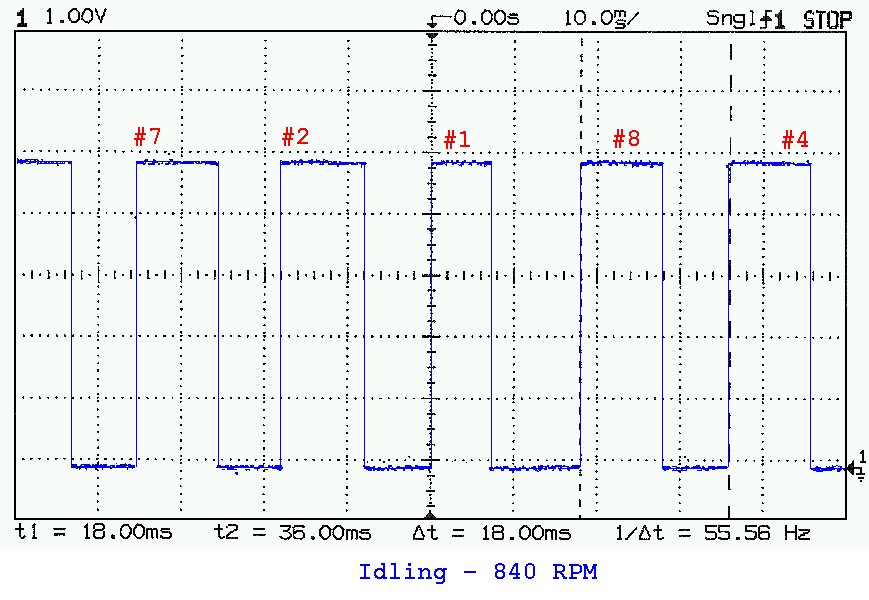
This plot shows the output pulse train
from the Hall Effect Sensor in the distributor. The rising edge is
the actual timing event (normally 10 degrees BTDC). This rising edge
also occurs when the metal tab of the Shutter Wheel comes between the permanent
magnet and the sensor element. Also note the narrow #1 pulse.
This narrow pulse signals to the ECU that #1 cylinder has just fired (or
at least supposed to). The #1 pulse is 75% of the other seven pulses
(high period) with a duty cycle around 41%. The normal non number
one duty cycle is 55% high / 45% low.
Those of you with sharp eyes will
notice that in all the pictures in Edelbrock's instructions and catalogs
the width of the spades seem narrower than what the above waveform suggests.
Well they are. The below table is what I measured the widths of the
spade and gap on my distributor (on other shutter wheel in another installation
was also measured... both are the same).
| #1 Spade | .3320 " | 30.5% |
| #1 Space | .7550" | 69.5% |
| Normal Spade | .4985" | 45.9% |
| Normal Space | .5885" | 54.1% |
The reason that the actual waveform is not the same as what you would expect from the widths of the paddles is that the Hall Effect Sensor does not change state when the edge is at 50% of the sensors width. If it did the duty cycle would be the same as the actual shutter wheel. On mine the output of the sensor goes high at a point when the paddle is about 25% of the way across the width of the sensor. The falling edge occurs approximately when there is only 15-20% of the trailing edge of the paddle inserted into the sensor body. This effectively widens the width of the paddles considerably changing the duty cycle.